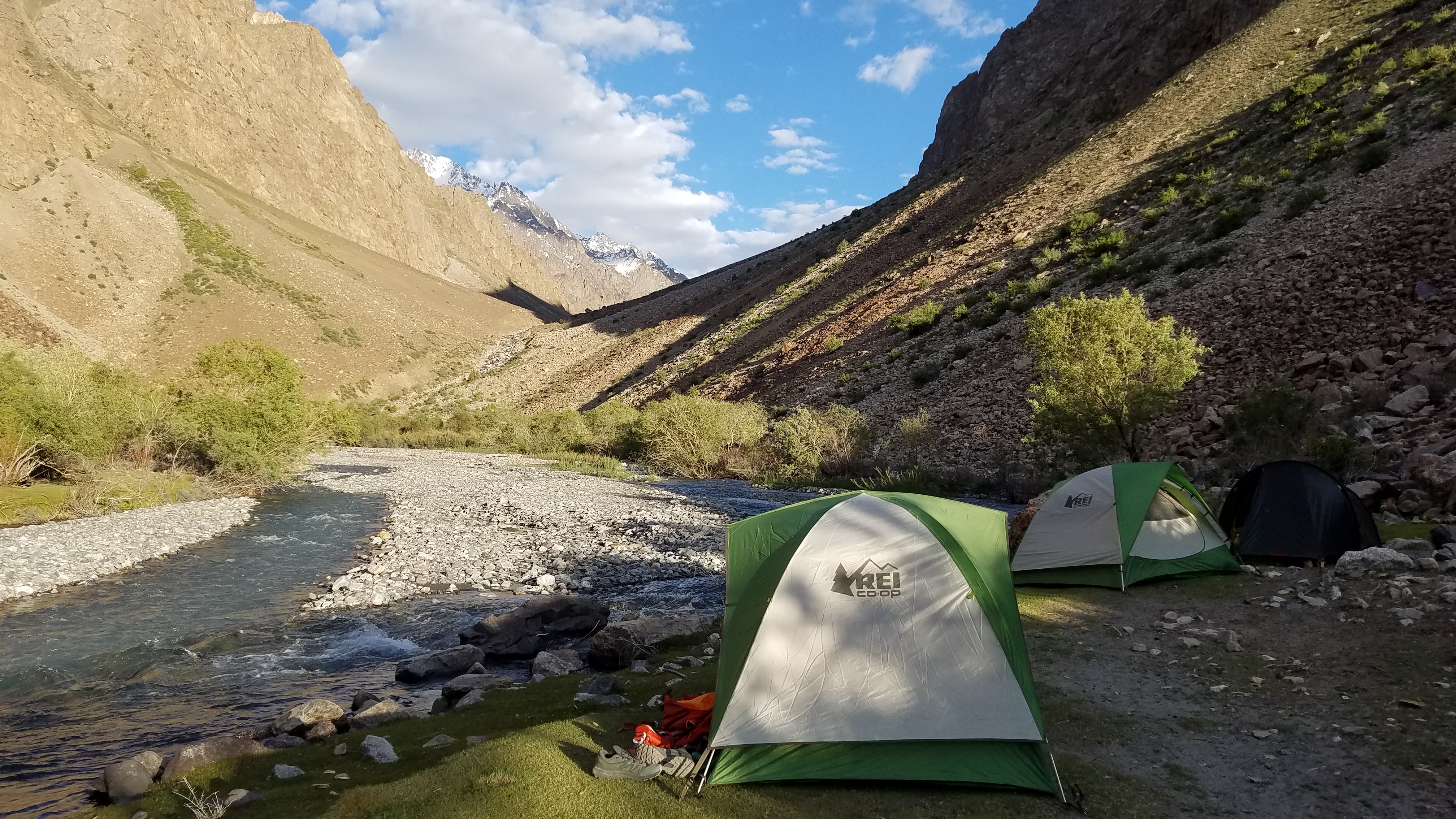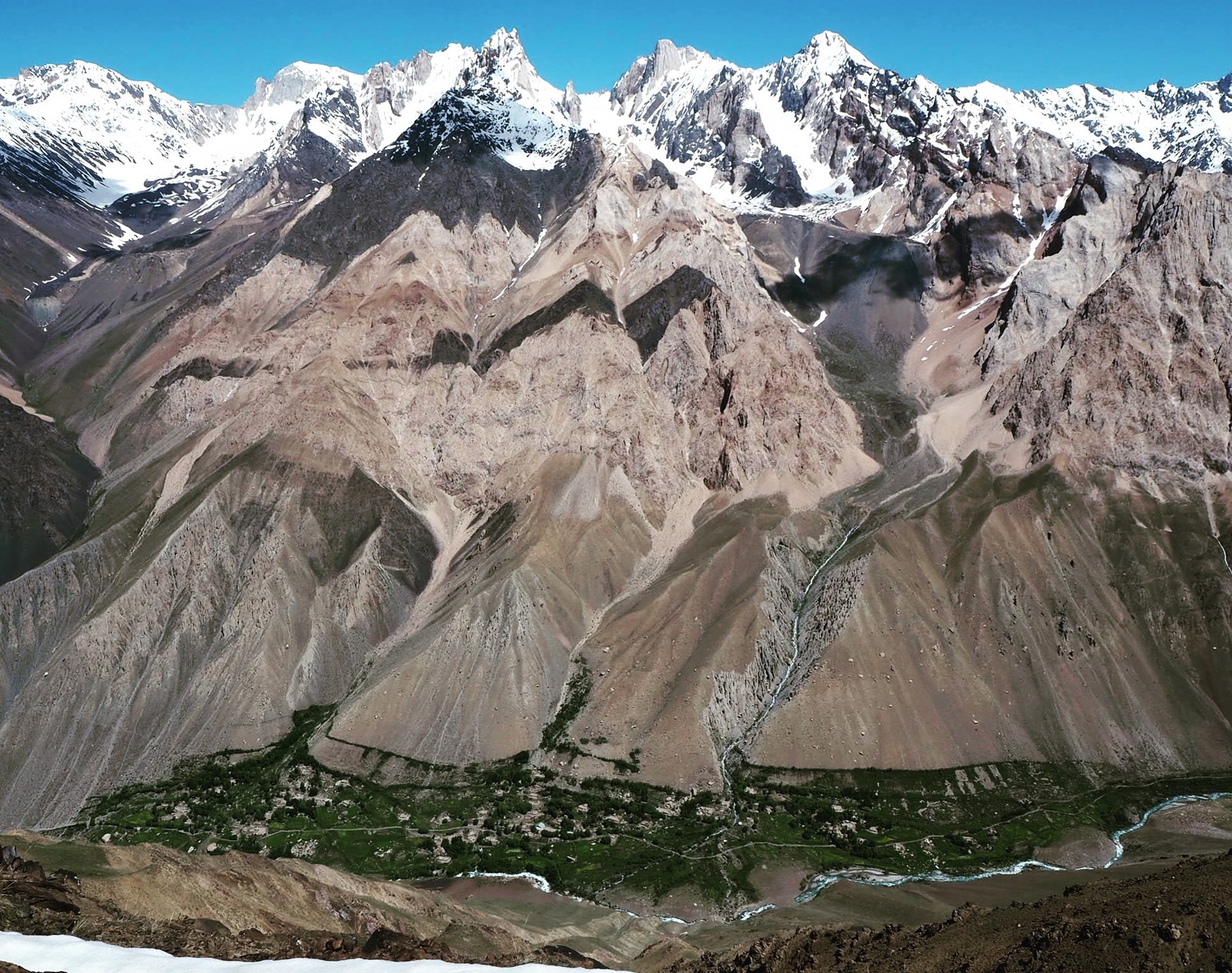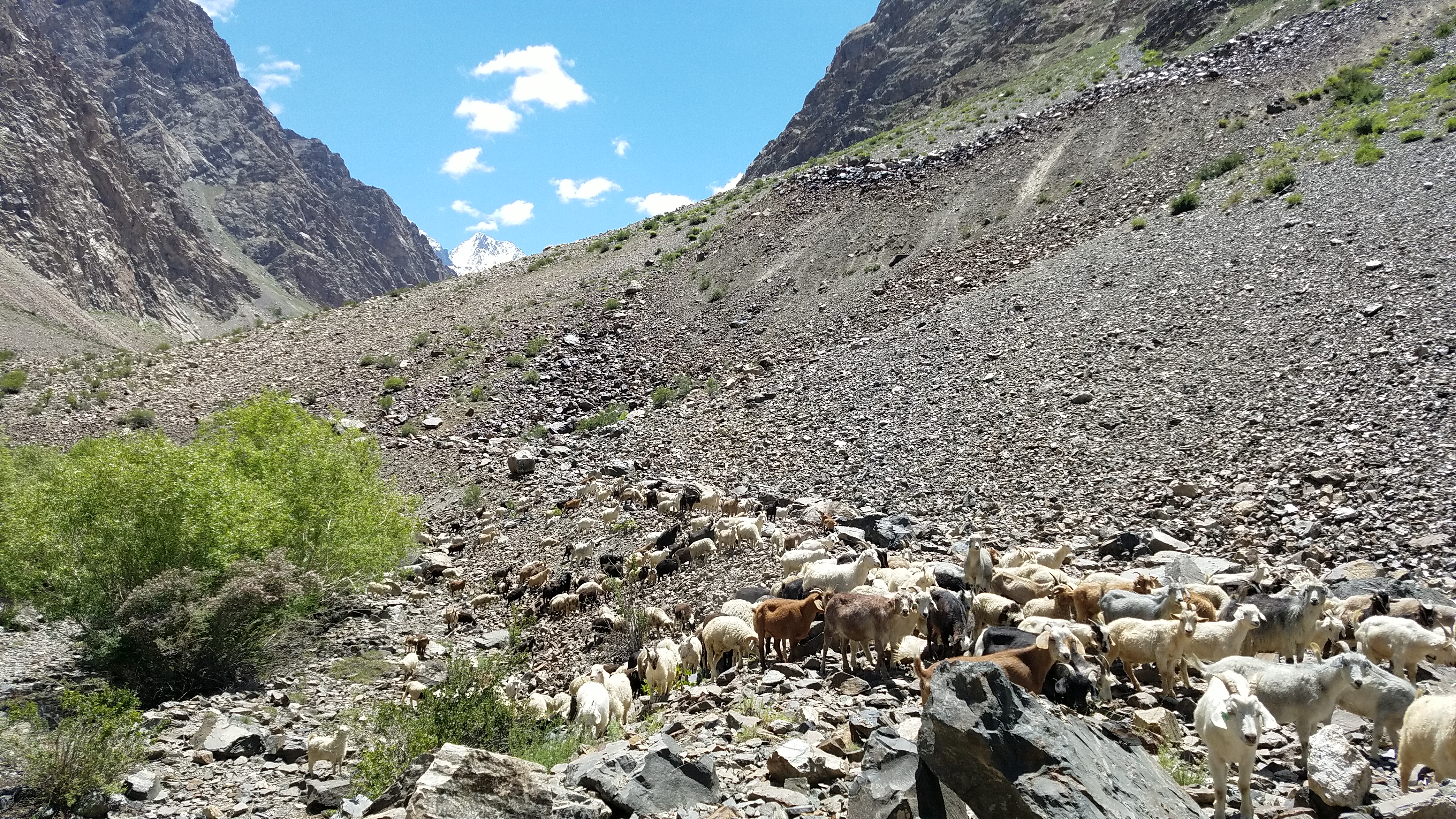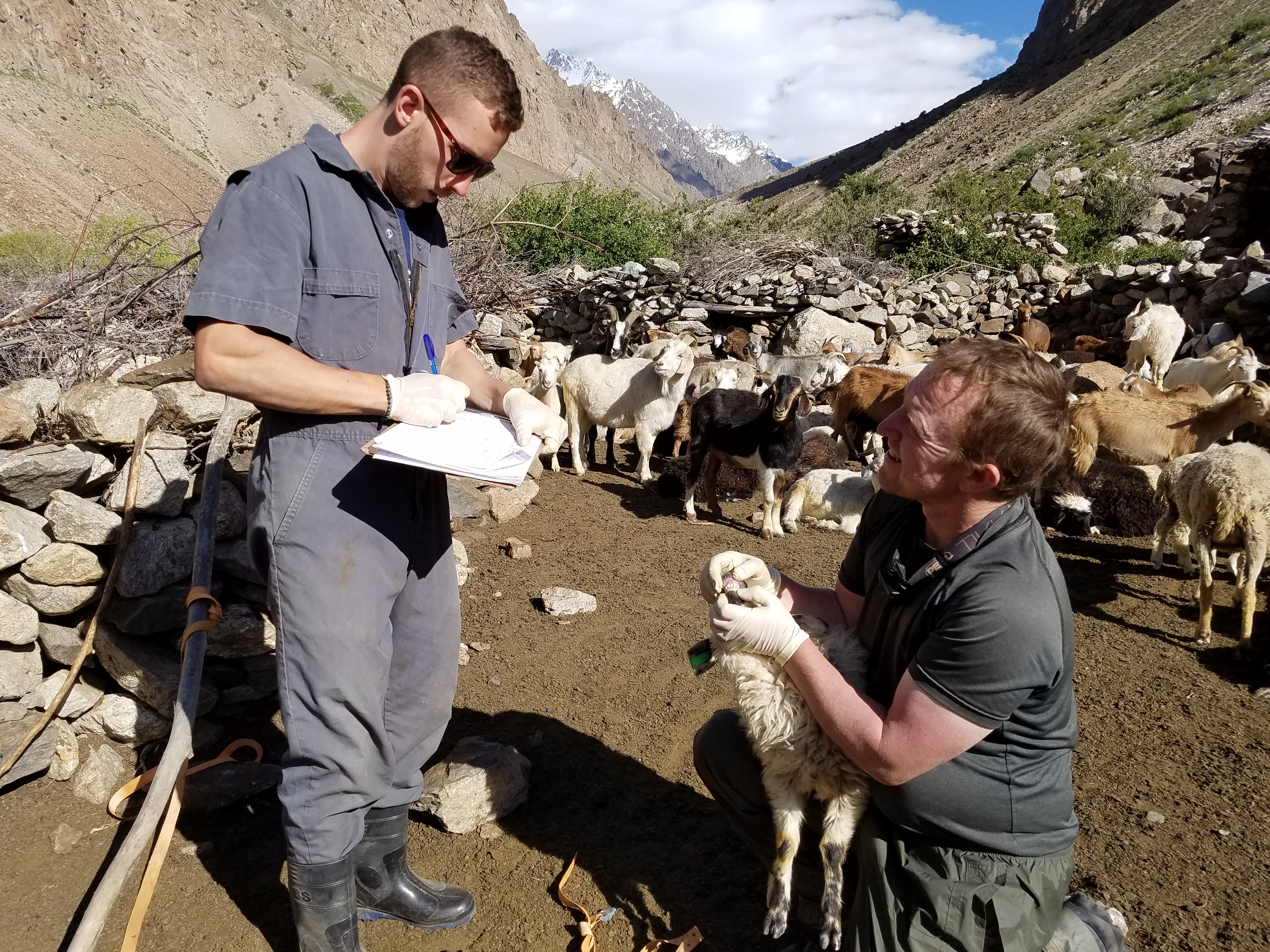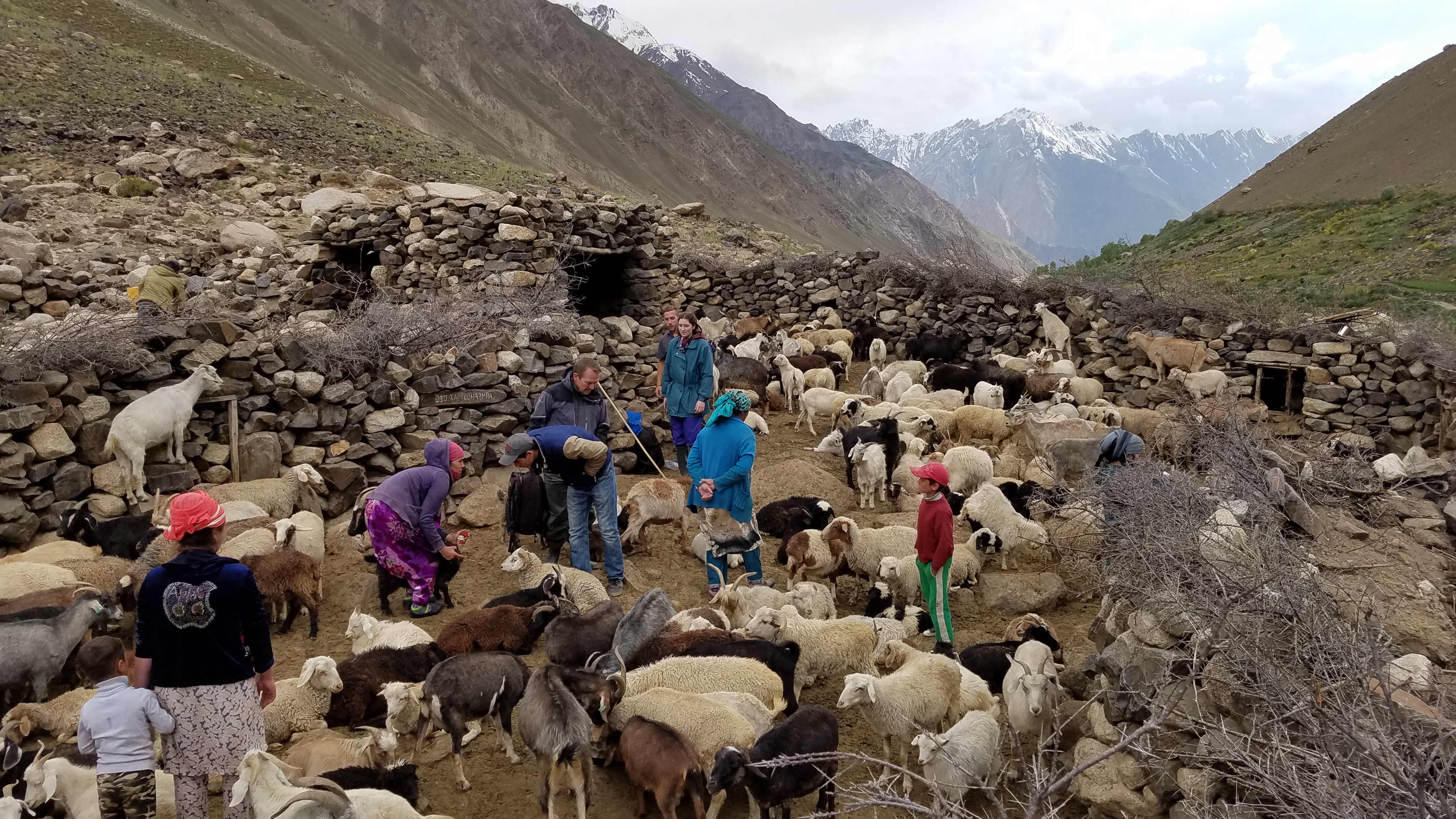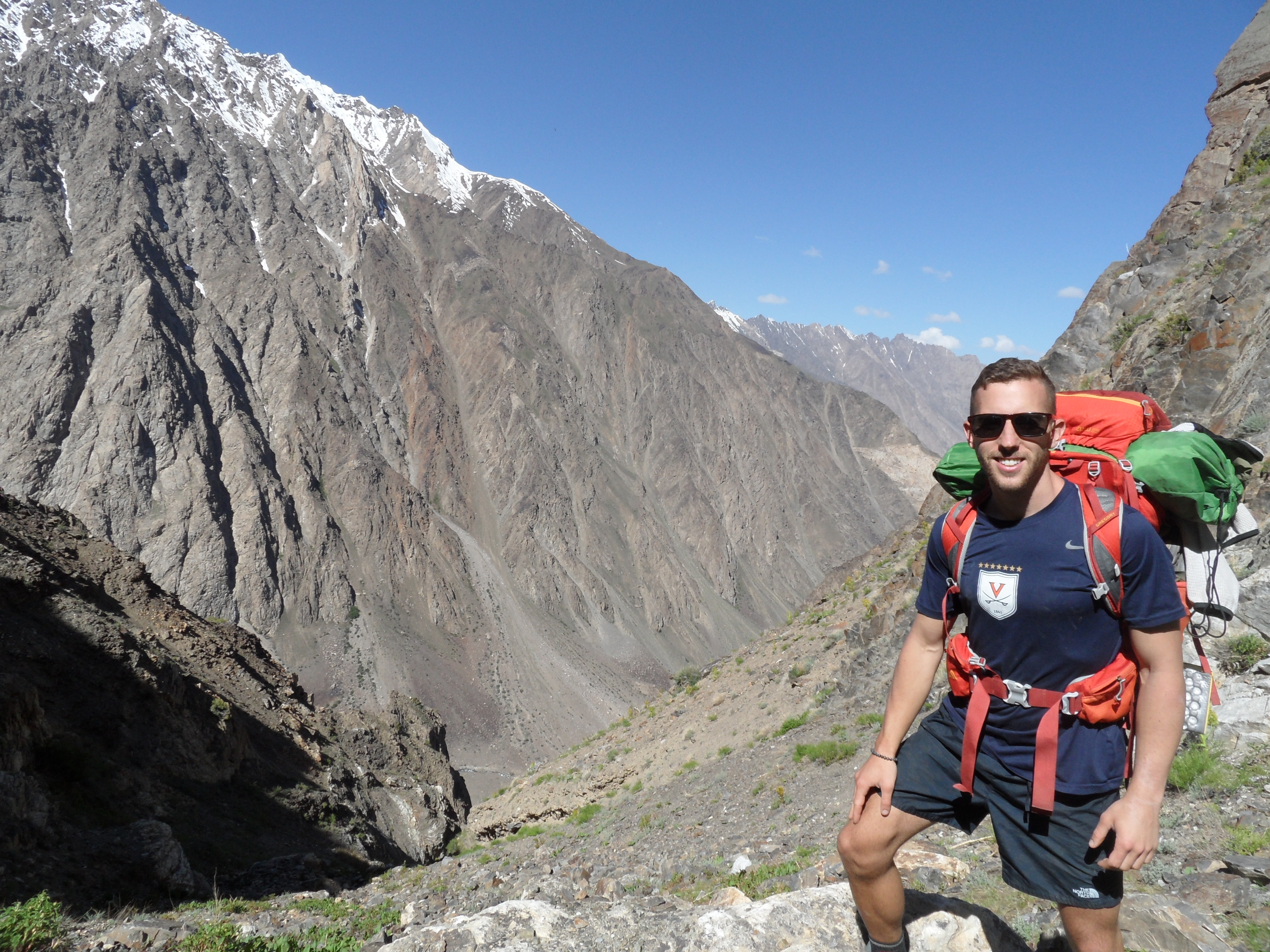Pastures in the Pamirs
By Daniel Foley, Cornell DVM ‘21
At an altitude of 13,000 feet, I’m strangely captivated by the beads of water collected on the ceiling of my thin nylon shelter. An individual drop slowly swells and parts from its neighbors, plummeting down and crashing on the surface of my sleeping bag. I’ve been watching this droplet lifecycle for some time now, eagerly waiting for adequate sunlight and the chance to explore my surrounding environment. A bit later I slide out of my sleeping bag, taking care not to wake my tent-mate. I’ve been gently admonished by fellow team members that I can do whatever I please in the morning, but normal individuals are sleeping and would like to do so undisturbed.
Unzipping the tent door and glancing out reveals an incredible landscape. My eye is naturally drawn to the 20,000-foot peaks surrounding the campsite, but in between these monoliths lives a beautiful mix of terrain, from rock and ice to rolling pastures. This place is special, and while it is easy to only see it as a playground for adventure, it’s important to recognize the delicate ecosystems at play.
My attention is redirected to a shepherd herding his flock of goats out of their protected nighttime enclosure and into the surrounding pasture. While this activity may seem to be in peculiar proximity to our campsite, there could be no better location for our team. This eclectic bunch of veterinary students and scientists is a bit obsessed with sheep and goats, and in Tajikistan summers, the majority of these small ruminants are in high-altitude summer pastures. This ostensibly looks like an idyllic pastoral scene; however, the reality is that this is a uniquely harsh domain. Livelihoods are tenuous and the health of humans, livestock and wildlife is deeply intertwined.
The evolution of these pastures stems from a cycle of overgrazing and resource scarcity. Local communities are forced to seek out new grazing land — also known as “summer pastures” — to adequately feed their livestock, which in turn increases pressure on surrounding ecosystems. To access these remote grazing areas, households will pay a shepherd to care for their animals for the summer season. This system has a clear short-term nutritional benefit, but the core issue of grazing scarcity remains unresolved.
Additionally, it engenders an environment helpful for infectious disease transmission among livestock, as well as spillover to their wild ungulate relatives. Wild argali sheep and ibex are dependent on the very same pastures, and with an attenuating supply of vegetation, their prosperity is threatened. The added risk of infectious disease puts these species in an even more precarious position. This central issue of livestock and wildlife health directs our work, and is the reason why we follow goats and sheep to such remote locations.
To reduce infectious disease spillover between livestock and wildlife, the ultimate goals are to improve livestock health (and individual animal productivity) while reducing the total number of livestock. We collected blood and fecal samples to identify and track the prevalence of important livestock diseases. Knowledge of specific diseases can guide interventions, which also mitigates the risk of spillover to wildlife. Additionally, decreasing the number of livestock will lessen competition with wild ungulates for pasture as well as reduce infectious disease transmission risk. Our hope is that by increasing the efficiency of production through improved health management strategies, farmers will agree to raise fewer animals while maintaining a similar or increased profit. Through this increased livestock efficiency, we hope to lift pressure off of the surrounding ecosystems and wildlife.
Of course, this is an ambitious goal, and it won’t be easy to convince livestock owners to reduce herd size. Perhaps the most valuable information we gathered came through interviewing local stakeholders to try and uncover the principal issues these communities face. Through these conversations, agreements can begin to take shape. For example, livestock owners would be far more likely to reduce herd size if certain services could be provided, such as consistent veterinary care, protection from predators, and access to a pharmacy. These things obviously can’t be accomplished by spending one month with these communities, but understanding local concerns and needs of course provides critical direction moving forward.
The terrain, both incredibly harsh and beautiful, has created tremendously resilient communities and wildlife, although the path towards sustainable rangeland management carries no guaranteed outcome. The time I was so fortunate to spend in this unique environment was deeply moving, and left me with no doubts that this is a place on Earth worth conserving.
Daniel Foley is a Cornell DVM graduate, class of 2021, who currently works in small animal primary care/emergency medicine in Denver, Colorado. He is enjoying post-graduate life and capitalizing on the many outdoor adventure opportunities in Colorado. Long term, Daniel aspires to return to academia for ancillary training in One Health to help sustain the beautiful mountain ecosystems that he treasures.
Read the earlier posts of our "One Health on the Roof of the World" blog series:
- Part 1 - The Genesis of a New Project on the Roof of the World
- Part 2 - Alichur: An Overture of the Pamirs
To follow this blog series and receive updates when new blogs are posted, add your email in the Subscription box on this page!

